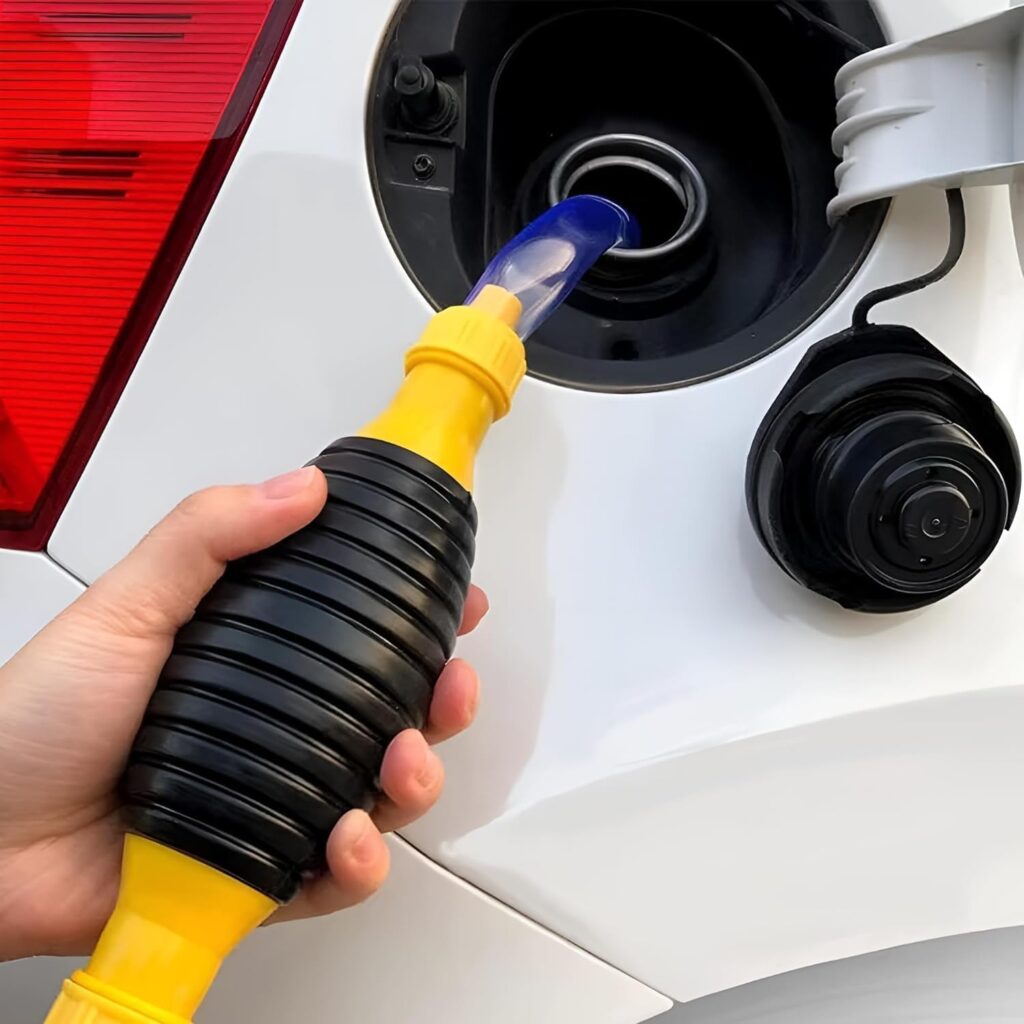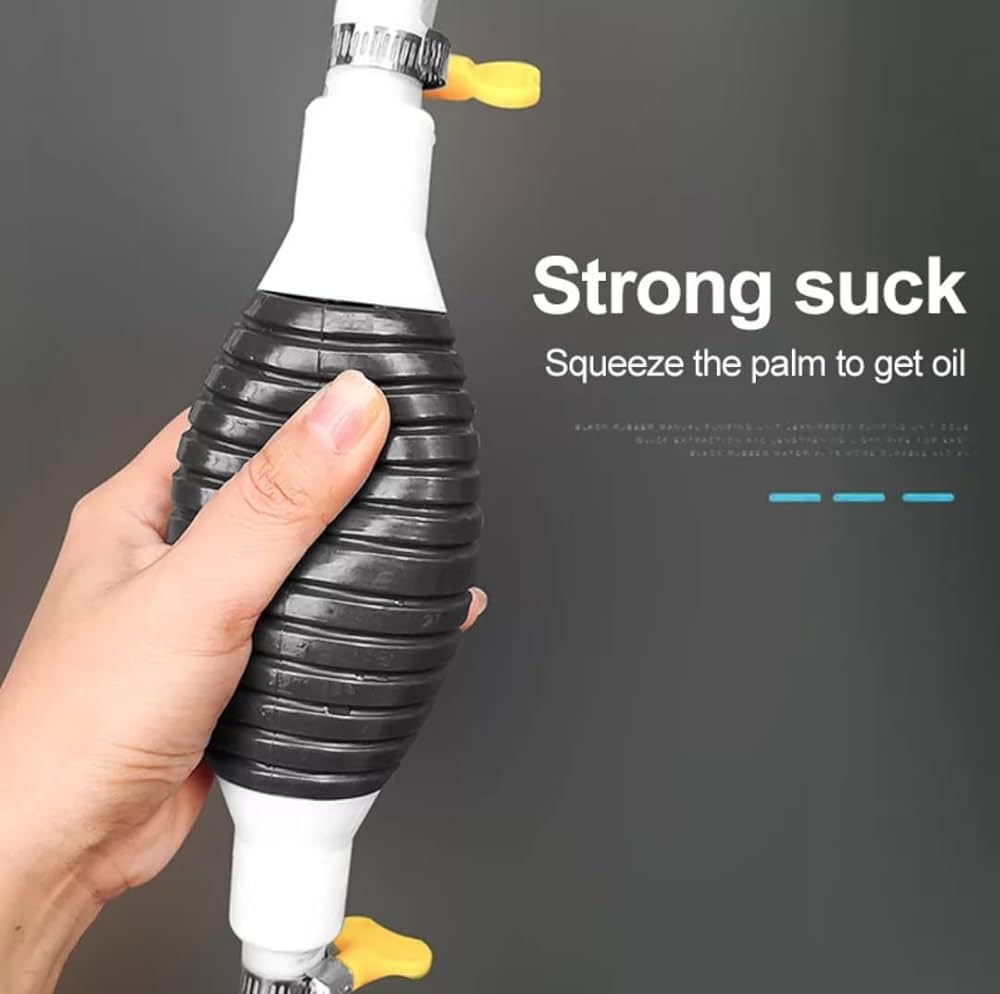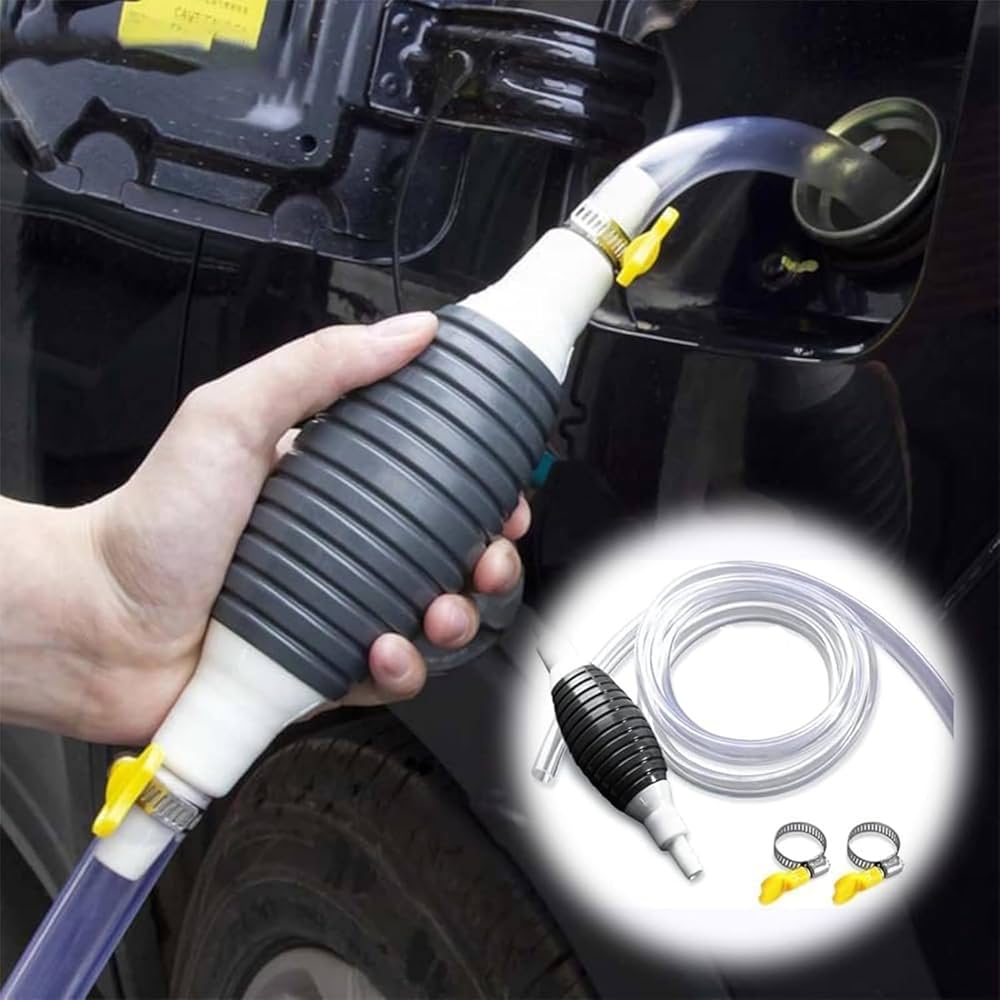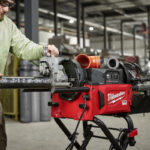A fuel transfer pump is a critical component in various systems that require the transportation of fuel from one location to another. Its primary purpose is to move fuel, such as gasoline, diesel, or other combustible liquids, from a storage tank or reservoir to the engine or another destination.
The basic operation of a fuel transfer pump involves drawing fuel from the source, creating sufficient pressure to overcome resistance in the fuel lines, and delivering the fuel to its intended destination. These pumps are designed to handle the specific characteristics of the fuel being transferred, including viscosity, density, and flow rate requirements.
Fuel transfer pumps can be found in a wide range of applications, including automotive vehicles, marine vessels, generators, and industrial equipment. They play a crucial role in ensuring a reliable and consistent fuel supply, enabling the efficient operation of engines and other fuel-consuming systems.
Types of Fuel Transfer Pumps
Fuel transfer pumps are available in various types, each designed to cater to specific applications and operating conditions. The most common types include:
Rotary Pumps
Rotary pumps, such as gear pumps and vane pumps, are widely used for fuel transfer applications. These pumps operate by trapping and displacing the fuel through the rotation of gears or vanes. Rotary pumps are known for their simplicity, reliability, and ability to handle a wide range of viscosities. They are commonly used in automotive, marine, and industrial applications where a steady flow of fuel is required.
Centrifugal Pumps
Centrifugal pumps utilize the principle of centrifugal force to transfer fuel. These pumps have an impeller that rotates at high speeds, creating a centrifugal force that propels the fuel outward and into the discharge pipe. Centrifugal pumps are suitable for high-flow applications and can handle a wide range of fuel types, including gasoline, diesel, and aviation fuel. They are commonly used in large-scale fuel transfer systems, such as those found in refineries, bulk terminals, and power plants.
Reciprocating Pumps
Reciprocating pumps, also known as piston pumps, use a reciprocating motion to draw fuel into a cylinder and then discharge it through an outlet valve. These pumps are known for their ability to generate high pressures and can handle a wide range of viscosities. Reciprocating pumps are often used in applications where precise metering or high-pressure fuel transfer is required, such as in fuel injection systems or hydraulic power units.
Each type of fuel transfer pump has its unique advantages and limitations, and the choice depends on factors such as the required flow rate, pressure, viscosity of the fuel, and the specific application. Proper selection and maintenance of the appropriate pump type are crucial for ensuring efficient and safe fuel transfer operations.
Components and Construction
A fuel transfer pump typically consists of several main components, including a housing, impeller, shaft, bearings, and seals. The housing is the outer casing that encloses the internal parts and provides a mounting surface for the pump. It is often made of cast iron, aluminum, or stainless steel, depending on the application and compatibility with the fuel being transferred.
The impeller is the rotating component responsible for imparting energy to the fuel and creating the necessary flow. It is typically made of corrosion-resistant materials like stainless steel, bronze, or specialized polymers, designed to withstand the chemical properties of the fuel and minimize wear over time.
The shaft connects the impeller to the drive mechanism, which can be an electric motor, engine, or other power source. It is usually made of hardened steel or stainless steel and is precisely balanced to ensure smooth operation and minimize vibrations.
Bearings are essential components that support the shaft and allow for smooth rotation. They can be ball bearings, roller bearings, or sleeve bearings, depending on the pump design and operating conditions. Proper bearing selection and lubrication are crucial for prolonged service life and efficient operation.
Seals are used to prevent leakage of fuel from the pump and ingress of contaminants. Common seal materials include mechanical seals, lip seals, or packing glands, chosen based on their compatibility with the fuel, operating temperature, and pressure conditions.
In terms of design considerations, fuel transfer pumps are often designed with specific features to meet the requirements of different applications. For example, self-priming pumps are used when the pump needs to be initially filled with fuel before operation, while positive displacement pumps are suitable for high-viscosity fuels or applications requiring precise flow control.
Additionally, the materials used in the construction of fuel transfer pumps are carefully selected to ensure compatibility with the fuel being transferred, as well as resistance to corrosion, wear, and chemical attack. Factors such as temperature, pressure, and flow rate also influence the design and material selection for optimal performance and durability.

Working Principle
A fuel transfer pump is designed to move fuel from a storage tank or reservoir to the engine or other equipment that requires the fuel. The working principle of a fuel transfer pump revolves around creating a pressure differential that causes the fuel to flow in the desired direction.
The pump typically consists of an impeller or rotor that rotates within a housing. As the impeller spins, it creates a low-pressure area on the inlet side of the pump, allowing fuel to be drawn into the pump chamber. Simultaneously, the impeller’s rotation imparts kinetic energy to the fuel, increasing its pressure on the outlet side of the pump.
The inlet port of the pump is connected to the fuel source, such as a storage tank, while the outlet port is connected to the fuel line leading to the engine or equipment. When the pump is activated, the low-pressure area at the inlet causes fuel to be sucked into the pump chamber. The rotating impeller then accelerates the fuel, increasing its velocity and pressure.
As the high-pressure fuel exits the pump through the outlet port, it creates a continuous flow through the fuel line. The fuel transfer pump overcomes any resistance or friction in the fuel line, ensuring that the fuel reaches its destination with sufficient pressure and flow rate.
The impeller design and the pump’s construction materials play a crucial role in its efficiency and durability. Centrifugal pumps, for example, use an impeller with curved vanes that impart a centrifugal force to the fuel, while positive displacement pumps rely on the physical displacement of fuel by rotating gears or vanes.
Additionally, fuel transfer pumps often incorporate valves, filters, and other components to regulate the flow, prevent backflow, and ensure the fuel is free from contaminants. The pump’s housing and internal components are typically made from corrosion-resistant materials to withstand the harsh environment and potential exposure to fuel and other chemicals.

Applications
Fuel transfer pumps are widely used across various industries and systems that require the transfer of fuel from one location to another. Here are some of the key applications:
Automotive Industry: Fuel transfer pumps are an essential component in automotive fuel systems. They are responsible for transferring fuel from the fuel tank to the engine’s fuel injection system. These pumps ensure a consistent and reliable fuel supply, enabling proper engine operation and performance.
Aviation Industry: In the aviation sector, fuel transfer pumps play a crucial role in aircraft refueling operations. They are used to transfer fuel from storage tanks or refueling trucks to the aircraft’s fuel tanks. Reliable and efficient fuel transfer is critical for ensuring safe and uninterrupted flight operations.
Marine Industry: Fuel transfer pumps are indispensable in marine applications, such as boats, ships, and offshore platforms. They are used to transfer fuel from storage tanks to the engines that power these vessels. Marine fuel transfer pumps must be designed to withstand harsh environmental conditions and meet stringent safety regulations.
Power Generation: In power plants, fuel transfer pumps are employed to transfer fuel from storage tanks to the generators or boilers. These pumps ensure a continuous supply of fuel, enabling uninterrupted power generation. They are used in various types of power plants, including coal-fired, natural gas, and diesel-powered facilities.
Industrial and Commercial Facilities: Fuel transfer pumps are widely used in industrial and commercial settings that require the transfer of fuel for various purposes, such as powering backup generators, heating systems, or other fuel-consuming equipment. These pumps ensure a reliable fuel supply, minimizing downtime and ensuring continuous operations.
Fuel Distribution and Storage: In fuel distribution and storage facilities, fuel transfer pumps are essential for transferring fuel between storage tanks, loading and unloading fuel from tankers or trucks, and distributing fuel to various end-users or dispensing stations.
Regardless of the industry or application, fuel transfer pumps are designed to operate efficiently, reliably, and safely, ensuring the smooth and uninterrupted flow of fuel to meet the specific requirements of each system.

Selection Criteria
When selecting a fuel transfer pump, several factors need to be considered to ensure optimal performance, compatibility, and safety. Here are some key criteria to consider:
Flow Rate: Determine the required flow rate for your application, considering the volume of fuel to be transferred and the desired transfer time. Fuel transfer pumps are typically rated in gallons per minute (GPM) or liters per minute (LPM).
Discharge Pressure: Evaluate the required discharge pressure based on the distance the fuel needs to be pumped, the elevation changes, and the resistance in the piping system. Pumps are rated for their maximum operating pressure, which should match or exceed your requirements.
Fuel Type: Ensure the pump is compatible with the type of fuel you need to transfer, such as gasoline, diesel, kerosene, or aviation fuel. Different fuels may require specific materials and seals to prevent degradation or leakage.
Compatibility: Consider the pump’s compatibility with the existing fuel system, including the fuel tank, piping, and fittings. Ensure that the pump’s inlet and outlet connections match the system’s requirements.
Efficiency: Evaluate the pump’s efficiency, as more efficient pumps consume less energy and have lower operating costs. Look for pumps with high volumetric and mechanical efficiencies.
Duty Cycle: Determine the pump’s duty cycle, which refers to the amount of time the pump can operate continuously without overheating or causing damage. Match the duty cycle with your application’s requirements.
Portability: If you need a portable fuel transfer pump, consider factors such as weight, size, and the inclusion of features like carrying handles or wheels for easy transportation.
Environmental Conditions: Assess the operating environment, including temperature ranges, humidity levels, and exposure to dust or moisture. Choose a pump designed to withstand the expected conditions.
Noise Level: If noise is a concern, consider pumps with low noise levels, particularly for indoor or residential applications.
Certifications and Approvals: Ensure the pump meets relevant safety certifications and approvals, such as those from Underwriters Laboratories (UL), Canadian Standards Association (CSA), or ATEX (for explosive atmospheres).
By considering these selection criteria, you can choose a fuel transfer pump that meets your specific requirements, operates efficiently, and ensures safe and reliable fuel transfer operations.
Installation and Maintenance
Proper installation of a fuel transfer pump is crucial for its efficient and safe operation. The pump should be installed in a well-ventilated area, away from any sources of ignition or heat. It’s essential to follow the manufacturer’s instructions carefully and adhere to local regulations and safety guidelines.
When installing the pump, ensure that it is securely mounted on a level surface and that all connections are properly tightened. Check for any leaks or potential sources of fuel spillage and address them immediately. Additionally, it’s essential to ground the pump and associated equipment to prevent the buildup of static electricity, which can be a fire hazard.
Regular maintenance is key to ensuring the longevity and optimal performance of a fuel transfer pump. One of the most critical maintenance tasks is to regularly inspect and replace the pump’s filter, as a clogged filter can lead to reduced flow rates and excessive wear on the pump components.
Periodic checks for leaks, worn seals, and loose connections should also be performed. Lubricating the pump’s moving parts according to the manufacturer’s recommendations can help prevent premature wear and extend the pump’s lifespan.
In case of any issues or performance degradation, troubleshooting should be carried out promptly. Common problems may include low flow rates, excessive noise or vibration, and leaks. Consulting the manufacturer’s troubleshooting guide or seeking professional assistance can help identify and resolve the underlying issue.
Proper maintenance and timely repairs not only ensure the efficient operation of the fuel transfer pump but also contribute to a safer working environment by minimizing the risk of fuel spills, fires, or explosions.
Safety Considerations
Fuel transfer pumps handle flammable liquids, making safety a paramount concern. Potential hazards include fire, explosions, and exposure to toxic fumes. Proper precautions are essential to mitigate risks and ensure safe operation.
Potential Hazards:
- Fuel leaks or spills can create a fire hazard if ignited by a spark or open flame.
- Buildup of flammable vapors in enclosed spaces can lead to explosions.
- Inhalation of fuel vapors can cause respiratory issues and long-term health effects.
- Skin contact with fuel can result in irritation, dermatitis, or other adverse reactions.
Safety Precautions:
- Install fuel transfer pumps in well-ventilated areas to prevent vapor accumulation.
- Ensure proper grounding and bonding to prevent static electricity buildup.
- Use explosion-proof electrical equipment and eliminate potential ignition sources.
- Implement spill containment measures and have appropriate cleanup materials readily available.
- Wear personal protective equipment (PPE), such as chemical-resistant gloves, goggles, and respiratory protection.
- Establish emergency response procedures and train personnel on proper handling and cleanup methods.
Best Practices:
- Conduct regular inspections and maintenance to identify and address any leaks, wear, or damage.
- Implement a lockout/tagout procedure during maintenance or repair activities.
- Provide adequate training to personnel on safe operation, handling, and emergency procedures.
- Strictly follow manufacturer’s instructions and industry safety standards.
- Develop and enforce a comprehensive safety program tailored to your specific operations.
- Stay up-to-date with relevant regulations and industry best practices for fuel transfer pump safety.
By prioritizing safety through proper precautions, training, and adherence to best practices, the risks associated with fuel transfer pumps can be effectively managed, ensuring a safe working environment and protecting personnel, equipment, and the surrounding area.
Regulations and Standards
Fuel transfer pumps are subject to various regulations and industry standards to ensure safe and efficient operation, as well as environmental protection. These guidelines cover aspects such as design, materials, performance, installation, and maintenance.
One of the primary standards for fuel transfer pumps is the NFPA 30A: Code for Motor Fuel Dispensing Facilities and Repair Garages, published by the National Fire Protection Association (NFPA). This standard provides comprehensive requirements for the storage, handling, and dispensing of flammable and combustible liquids, including the specifications for fuel transfer pumps.
Another important standard is the UL 79: Standard for Power-Operated Pumps for Petroleum Dispensing Products, issued by Underwriters Laboratories (UL). This standard covers the construction, performance, and testing requirements for fuel transfer pumps used in service stations and other petroleum dispensing facilities.
The Environmental Protection Agency (EPA) also has regulations in place to prevent fuel leaks and spills, such as the Spill Prevention, Control, and Countermeasure (SPCC) rule. This regulation requires facilities with aboveground storage tanks to have appropriate containment and spill prevention measures, which may involve specific requirements for fuel transfer pumps.
In addition to these general standards, there may be local and state-level regulations that govern the installation, operation, and maintenance of fuel transfer pumps. These regulations often address issues such as permitting, inspections, and reporting requirements.
Manufacturers and installers of fuel transfer pumps must ensure compliance with these regulations and standards to maintain safe and environmentally responsible operations. Regular inspections, maintenance, and adherence to best practices are crucial to meeting these requirements and minimizing the risk of accidents, leaks, or environmental contamination.
Emerging Trends and Innovations
The fuel transfer pump industry is continuously evolving to meet the changing demands of various applications and environmental regulations. Here are some emerging trends and innovations shaping the future of fuel transfer pumps:
Improved Energy Efficiency: Manufacturers are focusing on developing fuel transfer pumps with higher energy efficiency ratings. This is achieved through optimized design, advanced materials, and the incorporation of variable speed drives. Energy-efficient pumps not only reduce operational costs but also contribute to a smaller carbon footprint.
Intelligent Monitoring Systems: The integration of IoT (Internet of Things) technology and smart sensors enables real-time monitoring of fuel transfer pump performance, fuel levels, and potential issues. Predictive maintenance algorithms can analyze data from these sensors to anticipate and prevent failures, reducing downtime and maintenance costs.
Compact and Lightweight Designs: With space constraints in many applications, there is a growing demand for compact and lightweight fuel transfer pumps. Manufacturers are employing advanced materials like composites and optimizing designs to reduce the overall size and weight of the pumps without compromising performance.
Increased Compatibility with Alternative Fuels: As the adoption of alternative fuels such as biofuels, hydrogen, and electric power sources continues to grow, fuel transfer pumps are being designed to handle a wider range of fuel types. This includes compatibility with different viscosities, chemical compositions, and operating conditions.
Improved Durability and Corrosion Resistance: Harsh operating environments and exposure to various fuel types can lead to corrosion and premature wear of fuel transfer pumps. Manufacturers are exploring the use of advanced coatings, specialized alloys, and corrosion-resistant materials to enhance the durability and lifespan of these pumps.
Modular and Scalable Designs: To cater to diverse applications and fuel transfer requirements, manufacturers are developing modular and scalable fuel transfer pump systems. These systems allow for easy customization, expansion, or reconfiguration to meet changing needs without the need for complete replacement.
Integration with Renewable Energy Sources: As the focus on sustainability increases, fuel transfer pumps are being designed to integrate with renewable energy sources like solar panels or wind turbines. This integration allows for more efficient and environmentally friendly operation, reducing reliance on traditional power sources.
These emerging trends and innovations in fuel transfer pump design and performance aim to address the evolving needs of various industries, enhance efficiency, reduce environmental impact, and improve overall operational reliability and cost-effectiveness.



